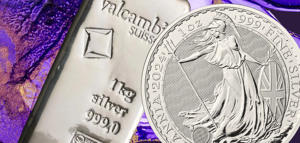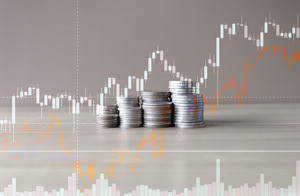Tavex uses cookies to ensure website functionality and improve your user experience. Collecting data from cookies helps us provide the best experience for you, keeps your account secure and allows us to personalise advert content. You can find out more in our cookie policy.
Please select what cookies you allow us to use
Cookies are small files of letters and digits downloaded and saved on your computer or another device (for instance, a mobile phone, a tablet) and saved in your browser while you visit a website. They can be used to track the pages you visit on the website, save the information you enter or remember your preferences such as language settings as long as you’re browsing the website.
| Cookie name | Cookie description | Cookie duration |
|---|---|---|
| tavex_cookie_consent | Stores cookie consent options selected | 60 weeks |
| tavex_customer | Tavex customer ID | 30 days |
| wp-wpml_current_language | Stores selected language | 1 day |
| AWSALB | AWS ALB sticky session cookie | 6 days |
| AWSALBCORS | AWS ALB sticky session cookie | 6 days |
| NO_CACHE | Used to disable page caching | 1 day |
| PHPSESSID | Identifier for PHP session | Session |
| latest_news | Helps to keep notifications relevant by storing the latest news shown | 29 days |
| latest_news_flash | Helps to keep notifications relevant by storing the latest news shown | 29 days |
| tavex_recently_viewed_products | List of recently viewed products | 1 day |
| tavex_compare_amount | Number of items in product comparison view | 1 day |
| Cookie name | Cookie description | Cookie duration |
|---|---|---|
| chart-widget-tab-*-*-* | Remembers last chart options (i.e currency, time period, etc) | 29 days |
| archive_layout | Stores selected product layout on category pages | 1 day |
| Cookie name | Cookie description | Cookie duration |
|---|---|---|
| cartstack.com-* | Used for tracking abandoned shopping carts | 1 year |
| _omappvp | Used by OptinMonster for determining new vs. returning visitors. Expires in 11 years | 11 years |
| _omappvs | Used by OptinMonster for determining when a new visitor becomes a returning visitor | Session |
| om* | Used by OptinMonster to track interactions with campaigns | Persistent |
| Cookie name | Cookie description | Cookie duration |
|---|---|---|
| _ga | Used to distinguish users | 2 years |
| _gid | Used to distinguish users | 24 hours |
| _ga_* | Used to persist session state | 2 years |
| _gac_* | Contains campaign related information | 90 days |
| _gat_gtag_* | Used to throttle request rate | 1 minute |
| _fbc | Facebook advertisement cookie | 2 years |
| _fbp | Facebook cookie for distinguishing unique users | 2 years |
Platinum vs. Silver as an Investment

When it comes to investing in precious metals, platinum and silver often stand out as attractive options. Both have unique characteristics, and understanding their roles in the investment world is key to making informed decisions.
So, which one is the better choice for your portfolio? This article will explore this more.
Understanding Platinum and Silver
What is Platinum?
Platinum is a dense, silvery-white metal known for its rarity and high value. Historically, it has been associated with luxury and industrial applications, such as in catalytic converters for vehicles, jewelry, and electronics. Due to its limited supply, platinum commands a high market price, often exceeding gold.
What is Silver?
Silver, on the other hand, is a versatile and abundant metal
Its historical significance as currency and its modern-day industrial uses make it a highly sought-after investment. From solar panels to medical devices, silver’s demand is deeply tied to technological advancements.
Investment Fundamentals

Why Invest in Precious Metals?
Precious metals like platinum and silver are excellent hedges against inflation. They provide a safety net during economic downturns and offer diversification to balance the risks of a portfolio dominated by stocks or real estate.
Key Factors Affecting Value
The value of platinum and silver is influenced by supply-demand dynamics and global economic conditions. For example, industrial slowdowns or technological innovations can significantly impact prices.
Comparing Platinum and Silver

1) Rarity and Availability
Platinum is about 30 times rarer than gold, making it more scarce than silver. Its limited mining locations increase its exclusivity, while silver is mined globally in larger quantities.
2) Market Volatility
Silver tends to be more volatile than platinum due to its higher sensitivity to industrial demand. Platinum, while not immune to price swings, often behaves more predictably.
3) Liquidity
Silver is more liquid than platinum, meaning it’s easier to buy and sell in smaller denominations. Platinum’s higher value per unit can make transactions less flexible.
4) Storage and Maintenance
Platinum’s higher value requires secure storage, increasing costs. Silver, being bulkier for equivalent value, also demands space and protection.
Financial Performance

Historical Price Trends
Historically, silver has shown more consistent price increases over the years, thanks to its industrial demand. Platinum, however, has seen significant highs and lows, largely driven by shifts in the automotive industry.
Potential for Future Gains
Experts predict that demand for both metals will grow, with silver benefitting from green technologies and platinum gaining from hydrogen fuel cells.
Risks and Challenges

1) Market Risks
Both metals are subject to market volatility. Investors need to stay informed about economic indicators and industrial trends.
2) Counterparty Risks
Always buy from reputable gold dealers such as Tavex to avoid counterfeit products or fraudulent dealers.
3) Economic Downturns
In recessions, demand for industrial metals like silver might drop, while platinum’s luxury association can also suffer.
Choosing Between Platinum and Silver
Who Should Invest in Platinum?
Platinum is ideal for longer-term investors seeking to capitalise on its rarity.
Who Should Invest in Silver?
Silver appeals to beginners and those with smaller budgets due to its affordability and liquidity
Ultimately the investment option comes down to subjective opinions. Explore our silver products here, and take a look at a selection of silver bars and coins.
Practical Tips for Investors
a) Conducting Market Research
Stay updated with market trends and price movements to make timely decisions.
b) Diversification Strategies
Balance your portfolio by combining precious metals with other asset classes.
c) Consulting Financial Advisors
Seek professional advice from our team at Tavex to navigate the complexities of investing in metals.
Conclusion
Both platinum and silver have their merits as investments. While platinum offers exclusivity and long-term growth potential, silver provides affordability and industrial demand. Your choice ultimately depends on your financial goals, risk tolerance, and market understanding.
FAQs
Is platinum or silver better for short-term investment?
- Silver’s higher liquidity and affordability make it a better choice for short-term gains.
How does inflation affect the value of platinum and silver?
- Both metals act as hedges against inflation, but platinum’s rarity can make it more resilient.
What are the tax implications of investing in platinum or silver?
- Tax policies vary by country, so consult a tax professional for specific advice.
Can I invest in platinum or silver through ETFs?
- Yes, exchange-traded funds (ETFs) are a convenient way to invest without owning physical metals.
Which metal has higher industrial demand currently?
- Silver leads in industrial demand due to its applications in electronics and renewable energy.



















